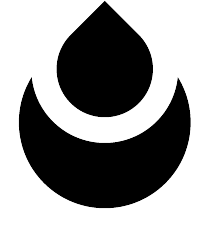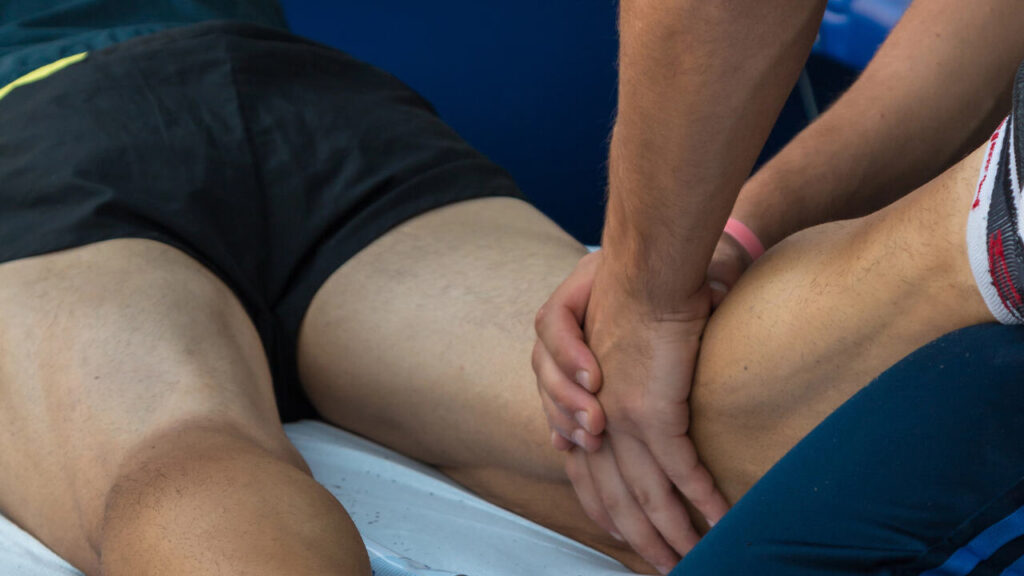Benefits of Sports Physiotherapy
Understanding the Role of Sports Physiotherapy
Sports physiotherapy focuses on preventing and managing injuries related to sports activities. It plays a crucial role in helping athletes maintain and improve their physical condition.
The role of sports physiotherapy includes:
- Diagnosing sports-related injuries
- Designing rehabilitation programs
- Providing manual therapy and exercises
- Educating on injury prevention strategies
A sports physiotherapist uses a combination of techniques to ensure that you receive a well-rounded treatment plan that addresses your specific needs.
| Role | Description |
|---|---|
| Injury Diagnosis | Identifying the type and extent of the injury |
| Rehabilitation Programs | Tailored exercises to aid recovery |
| Manual Therapy | Techniques like massage and mobilization |
| Injury Prevention | Educating on how to avoid injuries |
Improving Performance and Preventing Injuries
Improving performance is a key aspect of sports physiotherapy. By focusing on your strengths and weaknesses, a sports physiotherapist can develop a customized training program that enhances your athletic abilities.
Benefits include:
- Increased strength
- Enhanced flexibility
- Improved endurance
Preventing injuries is another critical component. Techniques used include:
- Warm-up and cool-down exercises
- Proper stretching routines
- Strength training
Combining these elements helps in reducing the risk of common injuries such as muscle strains, joint pain, and sprains. For more tips on preventing injuries, visit our section on physiotherapy for sports injuries.
| Benefit | Improvement Area |
|---|---|
| Increased Strength | Muscle power and endurance |
| Enhanced Flexibility | Range of motion |
| Improved Endurance | Stamina and performance duration |
By integrating these practices, you can maintain peak physical condition and perform at your best. For a deeper understanding of tailored exercise programs, check our article on physiotherapy exercises.
Common Conditions Treated
In sports physiotherapy, several common conditions are treated to help improve your overall well-being and athletic performance.
Muscle Strains and Sprains
Muscle strains and sprains are frequent injuries among athletes. Strains occur when muscles or tendons are overstretched or torn, while sprains involve ligament damage. Sports physiotherapy can help you recover from these injuries through targeted exercises, manual therapy, and other rehabilitation techniques.
| Condition | Description | Common Symptoms |
|---|---|---|
| Muscle Strain | Overstretching or tearing of muscles | Pain, swelling, limited movement |
| Sprain | Ligament damage | Bruising, swelling, instability |
For more details, you can refer to our article on physiotherapy for sports injuries.
Joint Pain and Stiffness
Joint pain and stiffness are common issues that can limit your range of motion and affect your performance. Conditions like arthritis, bursitis, and tendonitis can cause joint discomfort. Sports physiotherapy provides various treatment options such as manual therapy, specific exercises, and sometimes modalities like ice or heat therapy to relieve pain and enhance joint function.
| Joint Pain Condition | Description | Common Symptoms |
|---|---|---|
| Arthritis | Inflammation of joints | Pain, swelling, reduced flexibility |
| Bursitis | Inflammation of bursae (fluid-filled sacs) | Swelling, pain, stiffness |
| Tendonitis | Inflammation of tendons | Pain, tenderness |
For specific joint pain conditions, you can explore resources like physiotherapy for knee pain or physiotherapy for shoulder pain.
Post-Surgery Rehabilitation
Post-surgery rehabilitation involves guided therapy to help you recover swiftly and safely after surgical procedures. The goal is to restore movement, strength, and function through a customized treatment plan. Sports physiotherapy is equipped to provide post-operative care for a wide range of surgeries, ensuring you regain your pre-injury activity levels.
| Rehabilitation Focus | Post-Surgical Goals | Common Techniques |
|---|---|---|
| Range of Motion | Gradual increase of joint flexibility | Stretching exercises |
| Strength Enhancement | Regaining muscle strength | Resistance training |
| Functional Recovery | Return to daily activities | Task-specific exercises |
For more information about post-surgery care, you can check our guide on physiotherapy treatment.
These conditions are commonly addressed in sports physiotherapy, providing effective solutions to enhance recovery and performance. Explore additional resources like physiotherapy exercises and physiotherapy for chronic pain to learn more about maintaining your health and fitness.
Sports-Specific Training
Tailored Exercise Programs
Sports physiotherapy centers on personalized exercise routines designed to meet the unique needs of athletes. These tailored programs aim to enhance your athletic performance by focusing on the specific demands of your sport, whether it’s increasing strength, improving flexibility, or boosting endurance. A customized approach ensures that your training aligns with your goals and ultimately supports your overall athletic development.
Incorporating a variety of exercises helps address different aspects of sports performance. For instance, a runner might focus on leg strength and core stability, while a swimmer could emphasize shoulder mobility and endurance. Reviewing your progress and making necessary adjustments is crucial for optimal results.
| Sport | Focus Area | Example Exercises |
|---|---|---|
| Running | Leg Strength, Core Stability | Squats, Planks |
| Swimming | Shoulder Mobility, Endurance | Shoulder Rotations, Lunges |
| Basketball | Agility, Jumping Power | Box Jumps, Dribbling Drills |
Injury Prevention Strategies
A significant part of sports physiotherapy is developing preventive measures to minimize the risk of injuries. By incorporating injury prevention strategies into your routine, you can maintain peak performance while reducing downtime due to injuries. These strategies often include exercises aimed at strengthening vulnerable areas, improving flexibility, and enhancing coordination.
Identifying your sport-specific risk factors allows for a more targeted prevention plan. For example, soccer players are prone to ankle injuries, while tennis players often experience elbow issues. By proactively addressing these risks through specialized exercises and proper technique training, you can safeguard your health and prolong your athletic career.
| Sport | Common Injuries | Preventive Exercises |
|---|---|---|
| Soccer | Ankle Sprains, ACL Tears | Ankle Strengthening, Squats |
| Tennis | Tennis Elbow, Shoulder Pain | Forearm Stretching, Rotator Cuff Exercises |
| Weightlifting | Back Strain, Knee Issues | Deadlifts, Hamstring Stretches |
Performance Enhancement Techniques
Sports physiotherapy also encompasses various techniques aimed at boosting performance. These methods may involve advanced training modalities, like plyometrics, to improve explosive power, or neuromuscular training to enhance your coordination and reaction times. The goal is to enhance your natural abilities and ensure you reach your full athletic potential.
Additionally, performance enhancement techniques often include recovery strategies such as ice baths, massage, and proper nutrition. These elements work together to help you recover faster and perform better in your sport. Collaborating with a sports physiotherapist ensures that these techniques are implemented effectively and safely.
For more information on specific performance enhancement techniques and injury prevention strategies, you might find the following articles helpful: physiotherapy for sports injuries, physiotherapy exercises, and tips for straightening curly hair.
Incorporating sports-specific training into your routine can significantly enhance your performance and reduce injury risks. Working closely with a sports physiotherapist enables you to create a tailored plan that addresses your unique needs and goals, ensuring you stay at your best throughout your athletic journey.
Rehabilitation Techniques
Injuries can be a significant setback for athletes, but with the right rehabilitation techniques, you can get back in the game stronger than ever. Sports physiotherapy offers several effective methods to aid recovery and enhance performance.
Manual Therapy
Manual therapy involves hands-on techniques performed by your sports physiotherapist to manipulate your muscles, joints, and soft tissues. These techniques can help reduce pain, improve mobility, and restore function. Some common types of manual therapy include:
- Joint Mobilization: Gentle movements applied to the joints to relieve stiffness.
- Soft Tissue Mobilization: Targeting the muscles, ligaments, and fascia to decrease tension.
- Myofascial Release: Applying sustained pressure to the myofascial connective tissue to alleviate pain.
Therapeutic Exercises
Therapeutic exercises are customized activities designed to restore strength, flexibility, and endurance. Your physiotherapist will create a tailored program to address your specific needs and goals. You can explore physiotherapy exercises to gain more insights.
Some common types of therapeutic exercises include:
- Strengthening Exercises: Targeting specific muscle groups to increase strength.
- Stretching Exercises: Improving flexibility and range of motion.
- Balance and Coordination Exercises: Enhancing stability and preventing future injuries.
Modalities like Ice or Heat Therapy
Modalities such as ice or heat therapy are often used to manage pain and inflammation and promote healing. They can be a valuable part of your sports physiotherapy treatment plan.
| Modality | Purpose | Recommended Duration |
|---|---|---|
| Ice Therapy | Reduces swelling and numbs pain | 15-20 minutes |
| Heat Therapy | Relaxes muscles and improves circulation | 15-20 minutes |
| Contrast Therapy | Alternating between ice and heat for combined benefits | 5-10 minutes each |
For effective use of these modalities, consult your physiotherapist to understand the best approach for your condition. You may also want to read about physiotherapy treatment for a broader understanding of the available options.
Understanding and utilizing these rehabilitation techniques can significantly aid your recovery journey. By incorporating manual therapy, therapeutic exercises, and appropriate modalities, sports physiotherapy can help you return to your peak athletic performance.
Working with a Sports Physiotherapist
A sports physiotherapist plays a crucial role in enhancing your athletic performance and aiding your recovery from injuries. Here’s what to expect when working with a sports physiotherapist.
Initial Assessment and Treatment Plan
The initial assessment is the first step in your sports physiotherapy journey. During this session, the physiotherapist will evaluate your physical condition, the nature of your sports-related injury, and your overall health. This comprehensive evaluation helps in designing a tailored treatment plan to address your specific needs.
| Assessment Component | Description |
|---|---|
| Medical History | Discussion of past injuries, surgeries, and medical conditions |
| Physical Examination | Evaluates range of motion, strength, flexibility, and posture |
| Injury Analysis | Identifies the type and extent of your injury |
| Functional Testing | Assesses your ability to perform specific sports activities |
Following the assessment, a personalized treatment plan is created. This plan may include therapeutic exercises, manual therapy, and other modalities tailored to your needs. For example, if you suffer from knee pain, the treatment plan will focus on strengthening exercises and specific techniques to alleviate discomfort.
Progress Tracking and Adjustments
Regular progress tracking is vital to ensure the effectiveness of your treatment. Your sports physiotherapist will monitor your progress through follow-up sessions and adjust the treatment plan as needed.
| Tracking Method | Frequency | Purpose |
|---|---|---|
| Follow-Up Appointments | Weekly/Bi-Weekly | Assess improvement and modify exercises |
| Functional Tests | Monthly | Evaluate performance and physical abilities |
| Patient Feedback | Every Session | Address any concerns or discomfort |
| Outcome Measures | Quarterly | Quantify progress using standardized tests |
Adjusting the treatment plan might involve modifying exercises, introducing new techniques, or changing the frequency of therapy sessions. This dynamic approach helps in achieving the best outcomes for your recovery and performance enhancement. For more details on the types of adjustments made, refer to physiotherapy treatment.
Working with a sports physiotherapist provides a structured approach to recovery and performance improvement. It ensures that you receive personalized care and continuous support throughout your rehabilitation journey.
Integrating Sports Physiotherapy into Your Routine
Importance of Consistency
Consistency is key when it comes to integrating sports physiotherapy into your routine. Regular sessions with your sports physiotherapist will help ensure that you’re making steady progress towards your recovery and performance goals. Adhering to the prescribed exercises and treatments is essential for maximizing the benefits of physiotherapy. Neglecting your routine can lead to setbacks and slow down your progress.
To help maintain consistency, consider scheduling your physiotherapy sessions in advance and setting reminders for your at-home exercises. Keeping a log of your activities and progress can also be beneficial. This will not only keep you accountable but also provide valuable information for your therapist to adjust your treatment plan as needed.
Post-Treatment Self-Care and Maintenance
Taking care of yourself between physiotherapy sessions is crucial for sustaining the progress you’ve made. Proper post-treatment self-care includes following the guidelines provided by your sports physiotherapist, such as stretching, strengthening exercises, and using modalities like ice or heat therapy.
Here are some key aspects of post-treatment self-care and maintenance:
-
Follow the recommended exercises: Your physiotherapist will provide you with a tailored exercise program designed to target your specific needs. It’s important to perform these exercises regularly and correctly. For more information, visit our article on physiotherapy exercises.
-
Use heat or ice therapy: Depending on your condition, your physiotherapist may recommend applying heat or ice to manage pain and inflammation. Both modalities can aid in your recovery process. To learn more about these, check our section on physiotherapy treatment.
-
Maintain proper posture and body mechanics: Whether you’re sitting, standing, or lifting objects, maintaining proper posture and body mechanics can help prevent further injuries and support your recovery.
-
Stay hydrated and eat a balanced diet: Proper hydration and nutrition are essential for muscle recovery and overall health. Ensuring that you’re fueling your body with the right nutrients can aid in the healing process.
-
Get adequate rest: Your body needs time to recover, so make sure to get enough rest and sleep. Overworking yourself can hinder your progress and potentially lead to new injuries.
By integrating these self-care practices into your routine, you can enhance the effectiveness of your sports physiotherapy sessions and maintain the gains you’ve achieved. Consistency and proper self-care are essential for a successful recovery and improved performance in your sports activities. For additional tips and advice, explore our resources on physiotherapy for sports injuries and physiotherapy for back pain.














